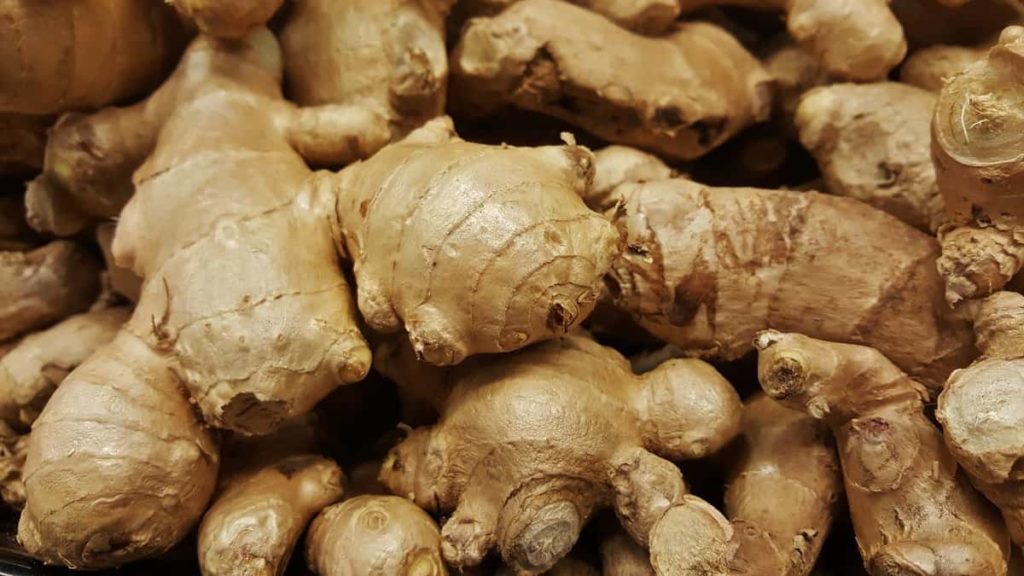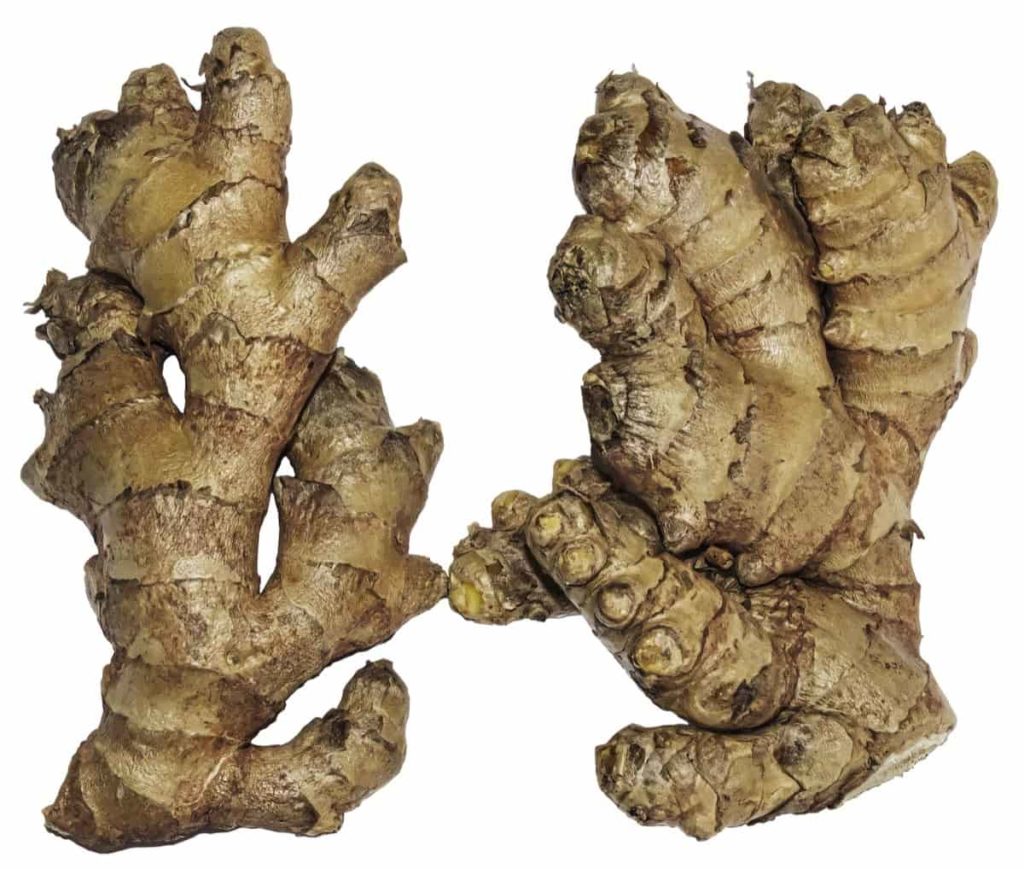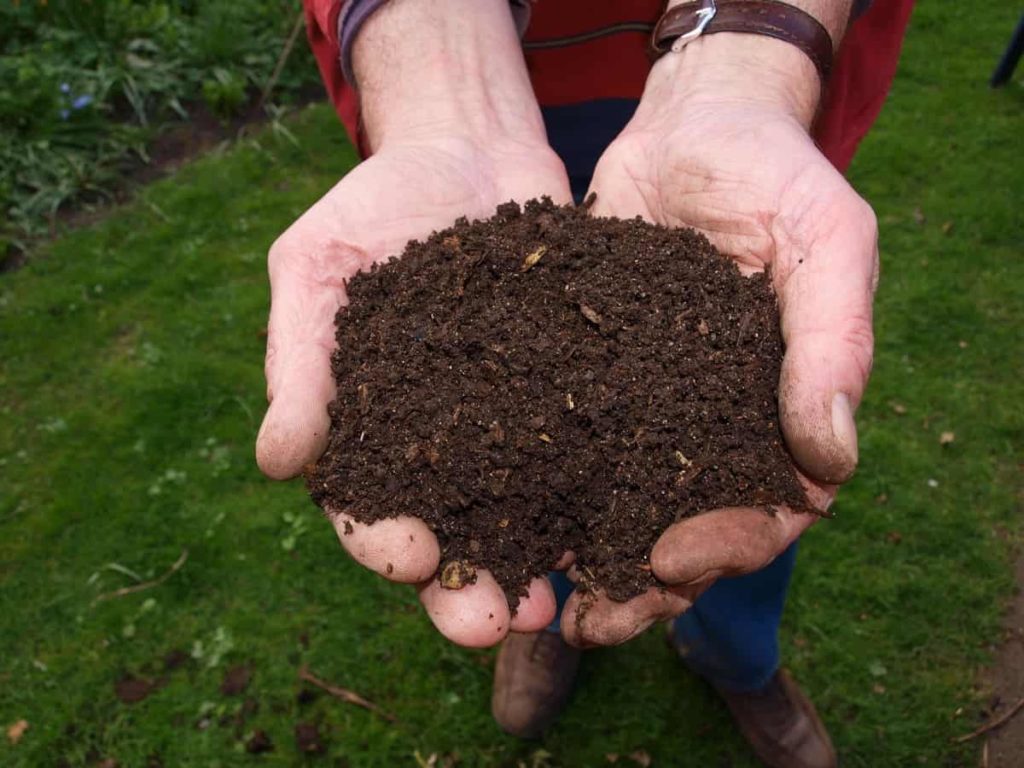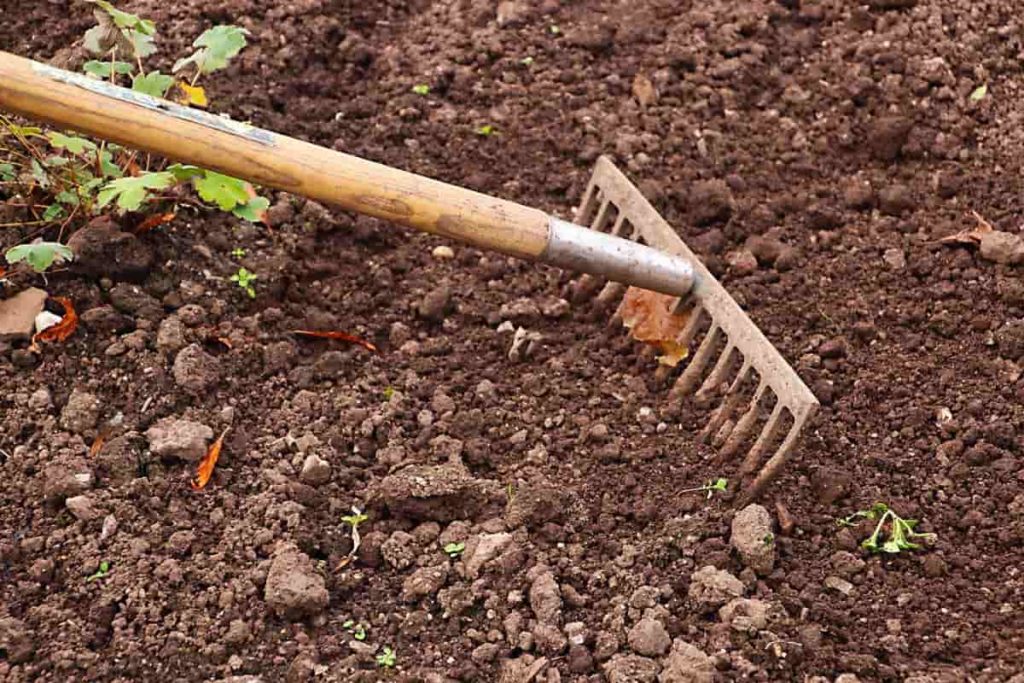The quality of soil is directly linked to the quality and quantity of food. Soil provides essential nutrients, water, oxygen, and roots that our food-producing plants need to grow and thrive. All crops need a proper level of nutrients for a good crop. Ginger is not exempt from this rule. Let’s check out more information about the soil preparation for Ginger plants.

Nutrients are as crucial as all other factors needed to grow good Ginger. Moist, well-drained soil is best for Ginger plants. The soil mixture must maintain moisture; however, Ginger plants mustn’t suffer from excessive saturated or water-filled soils. The best soils for drainage and moisture retention include sandy or loamy mixtures. Make a soil mixture using sand and compost for best drainage and a proper amount of organic matter for fertilization. However, being an exhausting crop, growing Ginger in the same soil year after year is not desirable.
Malnutrition and lack of minerals can lead to deterioration and stunting, affecting the amount and quality of your final production. To see the thriving Ginger plants, you must provide enough nitrogen, potassium, phosphorus, and sulfur. In addition, you can add more calcium as Ginger is a heavy calcium feeder. Growing Ginger requires pest-free soil, which has been fertilized before planting.
Pests like nematodes can remain viable in the soil for an extended period. Rotating your plants in the garden can protect against these pests affecting Ginger. Ginger rhizome is surprisingly delicate. It is essential to decide where to plant. If the weather seems too cool for this tropical, you can always use containers and move them indoors. Ginger grows well with sunlight in a hot and humid forest-like location filtered through trees in its natural environment.
Select a location you can prepare and loosen the soil at a depth of 8 to 10 inches and with scope for expansion. Growing Ginger will require necessities that are soil drains well, rich in minerals, and a generous amount of water. Nutrients and moisture stimulate photosynthesis resulting in the growth of leaves and roots.
In case you missed it: Ginger Growing Tips, Techniques, Ideas, and Secrets

Soil preparation for Ginger plants
Soil pH for Ginger
The specific ratio in loam soil guarantees fertile soil that drains well. It can use for flowering plants and vegetable crops, including Ginger. If your garden has fertile soil, you can plant Ginger without modifying the soil. Planting on the side of the hill is a great way to improve drainage in the soil, which will help it run downwards to prevent the accumulation of groundwater. Since Ginger is produced under the soil, proper soil coverage is also required to protect the rhizomes from the elements above the ground.
Avoid soil erosion due to wind and rain by providing a shelter for your Ginger plant to grow. Since Ginger rhizome grows under soil, the soil should be loose, so the rhizome is free to grow. Ginger plants need light acidic soil for healthy growth and rhizome production. Make sure your soil pH is between 5.5 and 6.5. If the pH of the soil is too high, it is very alkaline. If it is too low, it is very acidic and will interfere with the growth of Ginger.
Good clean soil is also essential for healthy Ginger. Ensure the soil is clean and free of insects, fungus, and parasites, such as root-knot nematodes. To reach the maximum pH level, you can add both to the control concentration. Increase the acidic level of your soil by adding natural materials such as coffee blends, elemental garden sulfur, or natural homemade compost mixtures.
Preparation of soil for growing Ginger in pots
Ginger needs high levels of phosphorus. You can check the soil before planting and modify it if necessary. Ginger thrives on high-quality, well-drained soil. Mixing garden soil with an equal amount of well-rotted manure should make a move. If your soil is of poor quality or heavy, buy rich potting soil instead. You can start Ginger in an initial tray filled with sphagnum moss or coconut fiber. This material drains very well, which prevents rotting in young plants.
Once leaves and roots are formed, you will need to transplant the Ginger into the soil, which can be painful for the plant. Like most garden plants, Ginger prefers light acidic soil. If your area has alkaline soil, adjust it between 6.1 and 6.5 pH using a garden store kit. Ginger grows well in containers, raised beds, or on the ground. First, reduce water to ensure healthy rhizomes so that soil can dry slightly at production time. Then make sure the soil remains moist.
In case you missed it: Growing Organic Ginger in Containers, Pots, Backyards

Preparation of soil for growing Ginger on the grounds
Soil rich in organic matter and well-draining is the best soil for Ginger. Rich, loose soil can provide enough nutrients to grow Ginger. At the planting time, well rotten cattle manure or fertilized with neem cake at the rate of 25 to 30 tonnes per hectare is to be applied with 50 kg phosphorus and potassium of 25 kg. They can either be applied by broadcasting to beds before planting or in pits at the planting time.
In addition, 75 kg of nitrogen per hectare is recommended to be planted in two equal distribution doses 40 and 90 days after planting. Plants are to be lowered to the ground after every top dressing with fertilizers and beds. Mulching soil with excess compost or straw helps provide nutrients, control weeds, and maintain water. Avoid water stagnation in the field as it cannot survive in water-filled conditions.
Avoid soggy soil on which Ginger was growing earlier. When Ginger is growing, you can add a few inches of compost to the Ginger sprouts. If your Ginger is not growing well, consider feeding with organic fertilizers like liquid seaweed or fish emulsion. Before planting Ginger, test your soil to know what is lacking in soil. Apply fertilizer only after shoot increases. Use granulated or soil-mixed fertilizer with nitrogen, potassium, and phosphorus.
These macronutrients should be in equal proportions, as a vast number of one can cause problems. For example, too little nitrogen can cause Ginger roots to slow down while burning too many roots. To prevent tremendous growth and disease, fertilizers should also include calcium, copper, magnesium, and manganese micronutrients.
Soil composting for Ginger
When planting rhizome, well-rotten cow dung or compost can be applied as an essential food. Enriched compost that triggers phosphorus and potassium needs can be beneficial. In addition, the application of neem cake is also required.
In case you missed it: How To Grow Ginger At Home – A Complete Guide

Modifying soil with good quality compost and well rotten manure before planting helps in improving soil quality and provides ideal conditions for developing Ginger roots. A good quality compost chicken-based manure is commonly used. In addition, ginger appreciates more nitrogen to help with leafy growth at the beginning of the growing season.
How to grow Ginger in poor soil
The Ginger plant needs rich, well-drained, sandy loam or clay soil. Ginger is famous for its rhizomes which are located underground. To allow the free growth of rhizomes, the soil must be broken and airy. Loose soil particles allow the plant to increase its presence under the ground. Air is an essential resource for chemical reactions in roots. In addition, the soil that has large space lets the rest of the water seeps into the ground, so water prevents accumulation.
Waterlogging in the soil can prevent the air from entering the soil, causing the root system to choke. As a result, it can be saturated with moisture and decline. Soils with reasonable amounts of sand, compost, vermiculite, and perlite are your ideal soil varieties to grow Ginger. If the soil of your available garden is impoverished or has high levels of clay, use rich potting soil instead. Ginger prefers a little acidic soil, so if your soil is more alkaline, adjust between 6.1 and 6.5 pH.
Land preparation for Ginger
The land preparation begins with early summer showers. First, the ground must be plowed 4 to 5 times, or the soil is dug up well to bring it into the fine tile. Next, weeds, straws, roots, etc., are removed. Finally, about one meter wide, 15 centimeters in height, and any manageable bed length are prepared at 40 to 50 centimeters between beds.
In case you missed it: Growing Ginger from Roots in Pots – A Full Guide

In the case of irrigation crops, the ridges are made at a distance of 40 centimeters. Solarization of beds is recommended for 40 days using transparent polythene sheets in areas prone to rhizome root disease and nematode infections. Alluvial gravel mixed with red soil is also suitable for Ginger cultivation.
Best soil mix for Ginger
Loose, well-drained, and sandy, loamy soil rich in compost or well rotten cow or chicken manure is perfect for growing Ginger in a pot indoors or outdoors. Soil that contains solid pieces or prevents moisture should be avoided. Instead, make a mixture of soil using a portion of sand and compost for best drainage and a proper amount of organic matter for fertilization. Since Ginger is produced under the soil, proper soil coverage is also required to protect the rhizome from the elements above the ground.
Natural soil amendments for Ginger
Ginger does not need any fertilizer during the growing season if gardeners plant Ginger in fertile soil. However, to grow in lean soil, you must modify it with compost and other organic materials before planting. In lean soils, add liquid fertilizer to the plant every other week during the growing season. You need to fertilize Ginger if they live in a region that receives heavy rains. Rain washes nutrients from the soil, for which the gardener has to feed the plant.
In case you missed it: Growing Ginger Hydroponically, Hydroponic Nutrients

Seaweed extract and fish emulsion are good choices to feed your Ginger. Gardeners can maintain moisture in the soil by milling around the plant in the early spring after planting. Spread the mulch around the plant base, giving good coverage for the soil. Mulch helps keep moisture in the soil, limiting the effects of vapor. In addition, mulch releases nutrients into the ground whenever you water Ginger.
What to do with soil after growing Ginger
Generally, farmers prefer the monocropping of Ginger. However, they also practice mixed crops with Maize, Soybean, Papaya, Cucumber, Pumpkin, Yam, Tapioca, and legumes. Sometimes Ginger is intercropped with Corn and Pineapple. Ginger is generally rotated in rain-filled areas with crops like Tapioca, Chilies, Rice and Legumes, Maize, and vegetables in irrigation conditions.
Ginger crop rotated with other crops like Beans, Cereals, etc., to prevent more productivity and disease problems. Ginger in the same field should not be taken for more than three years and must be rotated by other crops. Do not rotate Ginger with Chilli, Eggplant, or Tomato plants, as they all suffer from the same pathogens.
- How to Grow Tomatoes Organically at Home: A Comprehensive Guide
- Organic Gardening on a Budget: Low-Cost Methods and Materials
- Gongura Seed Germination and Planting Methods
- Cabbage Seed Germination and Selection
- Broccoli Seed Germination and Selection
- Asparagus Seed Germination and Variety Selection
- Seasonal Flower Gardening: Best Practices for Spring, Summer, Fall, and Winter
- How to Grow Hibiscus from Flower
- Plantation Ideas for Home Decoration: A Beginners Guide
- Flower Garden Designs and Layouts for Beginners
- Planting and Spacing Techniques in Papaya: A Beginner’s Guide
- Growing Gold: Essential Techniques for Planting Pineapples
- How to Make Kalanchoe Plant Bushy: Home Remedies and Solutions
- 11 Reasons Why Your Gardenia is Not Blooming: Home Remedies and Solutions
- Eco Elegance: The Guide to Designing a Drought-Tolerant Landscape
- Gardening on a Slope: Strategies for Hillside Landscaping
- Nourish and Flourish: Top Organic Mulches for Thriving House Plants
- Everything You Want to Know about Indian Mogra Flower: Discover Uses and Growing
- Green Thumb Success: Expert Tips for Cultivating Greenhouse Pumpkins All Year Round
- Maximize Growth & Flavor: The Ultimate Guide to Companion Planting in Herb Gardens
- How to Control Rhododendron Problems Naturally: Home Remedies and Organic Ways to Fix Them
- Natural Magic: The Remarkable Benefits of Cinnamon for Plants
- Best Steps to Revive Dying Tulip with Natural and Organic Treatment
- 10 Reasons Why Your Angel Trumpet is Not Blooming: Remedies and Treatment
- How to Fix Periwinkle Leaf and Flower-Related Problems: Natural Remedies and Solutions
- How to Fix Zinnias Leaf and Flower Problems: Discover Natural and Home Remedies
- Organic Steps to Induce Lemon Tree Flowers: A Comprehensive Guide
- Bloom Booster: Crafting the Perfect Homemade Bougainvillea Fertilizer
- Optimizing Growth: A Guide to Applying NPK Fertilizer for Potted Plants
- 10 Best Homemade Fertilizers for Rubber Plant: DIY Recipes and Application Method
- How to Boost Female Pumpkin Flowers: Effective Steps for More Flowers and High Yields
- Transform Your Indoor Garden: Top Benefits of Pink Salt for Houseplants
- 10 Best Homemade Fertilizers for Peacock Plants (Calathea): Easy DIY Guide
- Unlock Blooms: 9 Reasons Why Your Potted Chrysanthemum is Not Blooming
- 8 Reasons Why Your Potted Hibiscus is Not Blooming: Fix it with Simple Solutions
- Unlock Blooms: 9 Key Reasons Your Potted Frangipani Won’t Flower